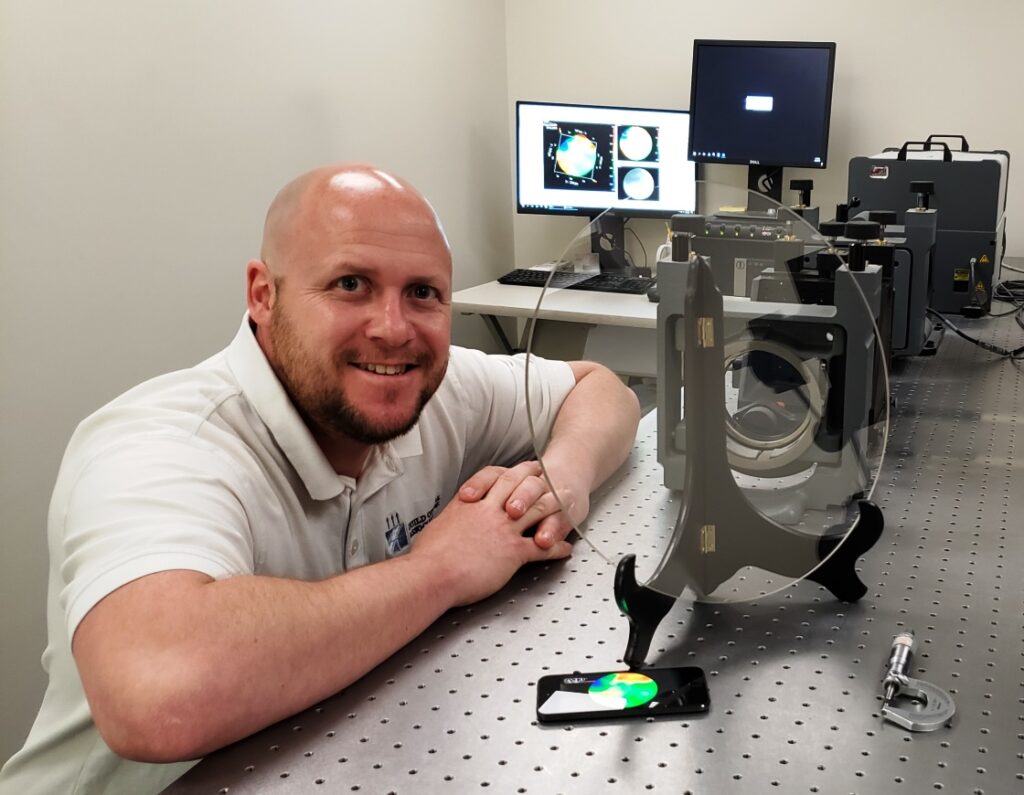Many people ask me what the benefits are to using sapphire windows instead of glass or fused silica. There are a few short easy answers such as; It’s scratch resistant, stronger, etc., but there’s even more involved such as spectral ranges and long term costs.
Below, I’ll do my best to touch on each benefit.
- Yes, it’s stronger and more expensive than typical glass. However, what is the long term cost of the fused silica window that you replace every month? Maybe there’s a glass optical component that causes your product to decline in performance over time due to harsh conditions. This is a perfect opportunity for a sapphire window. Al2O3 (sapphire) has a mohs hardness rating of 9. That’s 1 less than diamond, making it the second hardest material we can use for optical designs. The cost is a bit more than glass, but the savings over time can be remarkable. Replacing that glass window that you had to repair once a month with a sapphire window might be the last time you ever make that repair, and you won’t see a reduction in performance over time.
- Transmission range from UV to the Mid-IR. There aren’t any ultra-strong optical materials that cover the same spectrum as sapphire. For example: Common glass ranges from about 375nm to 2900nm. Guild Optics can source sapphire that transmits well starting at 190nm all the way to 5000nm. That’s fairly deep into the ultraviolet and into the mid infrared! Without any anti-reflective coatings, sapphire transmits through most of this range at 86%. Sometimes I have customers who want sapphire for their harsh condition application, but need a little more transmission. In this case, I recommend a normal AR coating on the interior face only, leaving bare sapphire on the exterior face to stand up to the abuse. The single side AR coating can increase your overall transmission to > 92%.
- Mechanical Properties. Yet again, the answer here is tough and strong. Glass starts melting at 1400°C. Sapphire is still useful at that same temperature. In fact a sapphire window can be used for most applications up to 1800°C or slightly greater. That’s nearly 3275°F. To quote an old popular quote from the 2000’s, “That’s Hot.”
But there’s more! Sapphire Windows are also nearly impervious to all chemicals. Only very strong hot caustics can eventually etch or damage a polished sapphire optical surface. It’s also an excellent thermal conductor.
So there you have it. The benefits of Sapphire windows might be the answer for your next project if any of these points sounded interesting to you. Guild Optical Associates is the place to call.
We’re located in Amherst, NH. Sapphire Optics MADE IN THE USA!
Our attention to detail and combined skill sets allow us to offer precision sapphire optical components for nearly any industry.
Email me today and let’s find out how I can help you with sapphire. – jlavoie@guildoptics.com
603-889-6247 x104
www.guildoptics.com
Thank you!
– Jon Lavoie


